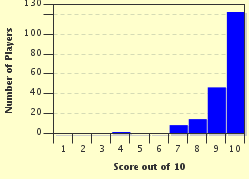Quiz Answer Key and Fun Facts
1. I need a picture of a polar bear for my collection. Where would I be most likely to find one?
2. Most dolphins live in the ocean but there is a dolphin which lives in fresh water in the Amazon River. What is so special about this dolphin that would make my photo collection complete?
3. I need to find Nemo! It's a clown fish I'm after, but where would I be most likely to find one?
4. I'd like a photo of an army of ants working feverishly. Can I find ants native to every continent on Earth apart from Antarctica?
5. Black and white animals are very striking and would make a wonderful addition to my photo album. Which of these animals is NOT known for being black and white?
6. My photo collection needs a bird to pose in a particular position - with one leg tucked up under its belly. Which wading bird could I find standing in this pose?
7. Those adorable giant pandas from China are famous for being black and white, but what colour are they when they are born?
8. I'm off to Australia in search of a koala. Where am I most likely to find one?
9. I'd like a picture of the tallest animal in the world, the giraffe. Where would I find a giraffe in the wild?
10. Someone told me I should look for turtles swimming in the ocean but where should I go to see them laying their eggs?
Source: Author
Tizzabelle
This quiz was reviewed by FunTrivia editor
NatalieW before going online.
Any errors found in FunTrivia content are routinely corrected through our feedback system.


